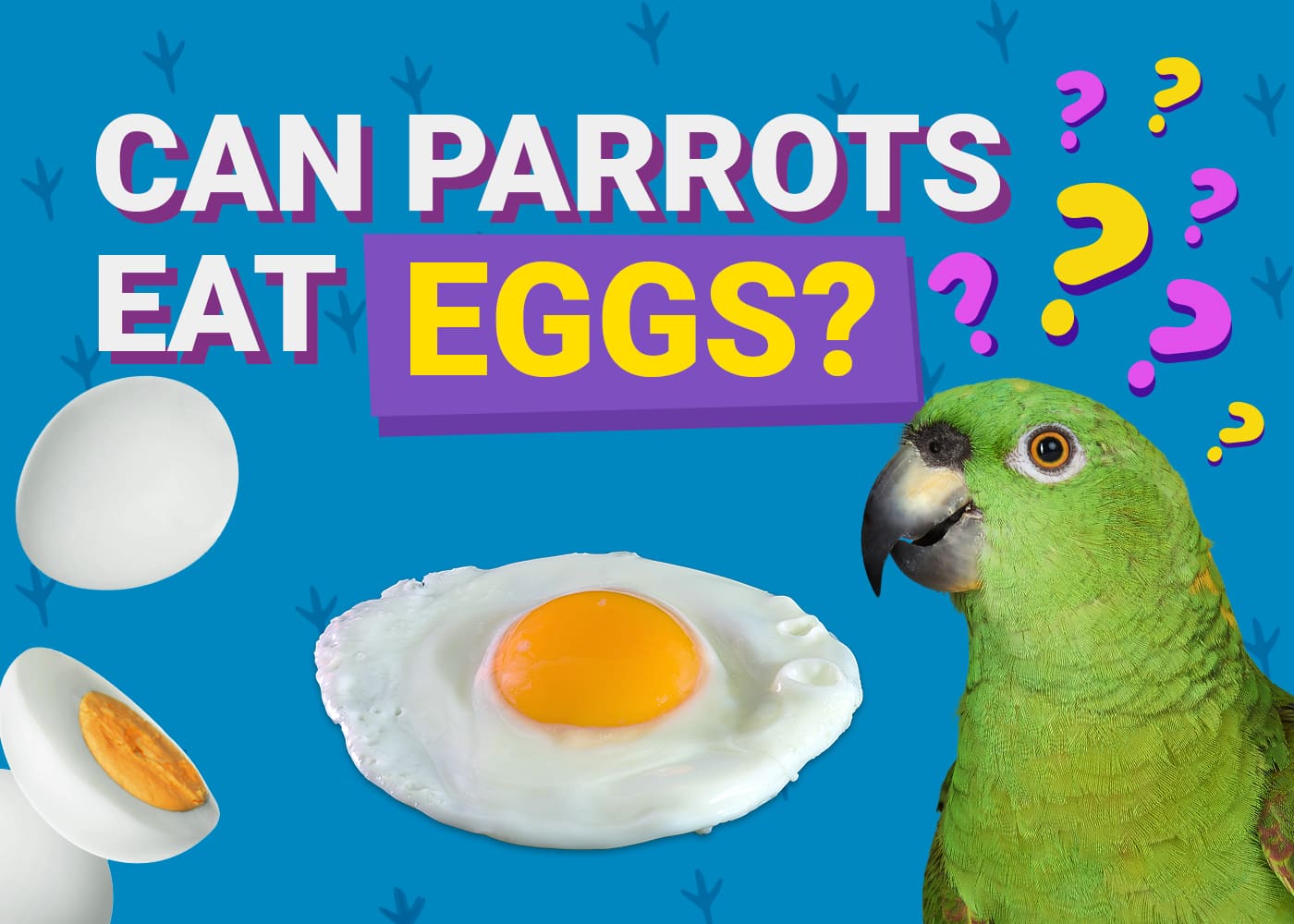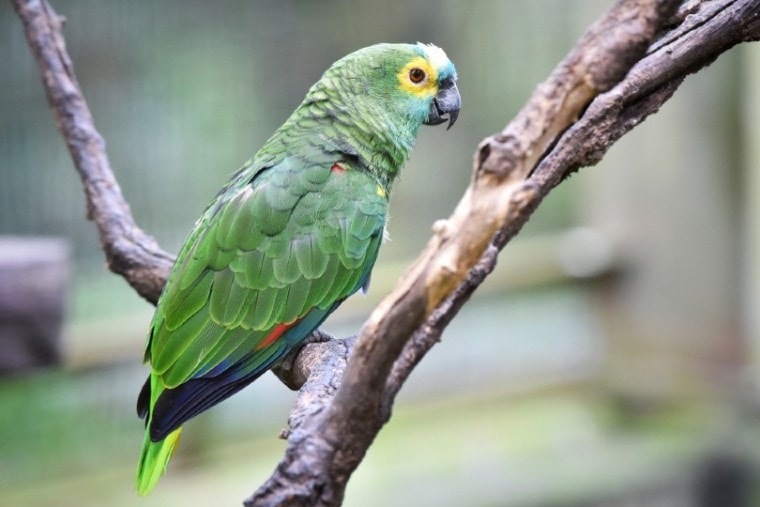
The Amazon parrot is a species of bird originating from various tropical areas in the world. There are 35 different species of Amazon parrots and the majority of them are available in the pet trade. These are attractive and popular birds that come in a range of different colors. The Amazon parrot has an affectionate and entertaining personality that makes them loveable pet birds who are easy to care for.
These birds are medium-sized and can quickly form a bond with their owners. If you are interested in learning more about the Amazon parrot and how to care for them properly, then this article is perfect for you!
Species Overview
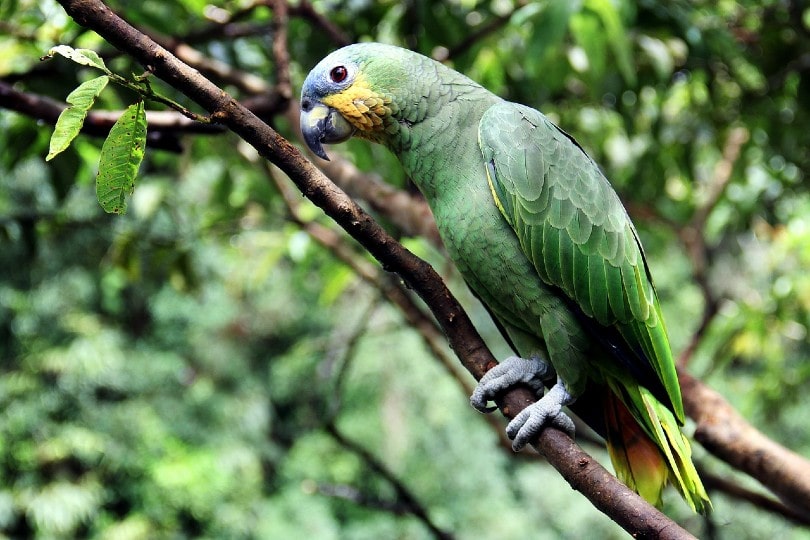
| Common Names: | Amazon parrot |
| Scientific Name: | Amazona |
| Adult Size: | 10-20 inches |
| Life Expectancy: | 40-70 years |
Origin and History
Amazon parrots originate from parts of the Caribbean, Mexico, and South America. This species of parrot is part of a genus consisting of 92 parrots in the order Psittaciformes. They fall under the family Psittacidae which is considered as one of the three families of true parrots. The new species of amazon parrot was first seen in 2014 by a Mexican Veterinarian and ornithologist Dr. Miguel. The parrots were found in a flock of three to five individuals and sighted together in a lead tree. It has been discovered that through evolution that the Amazon parrot family and Lilac-crowned parrot are connected.
Temperament
These stunning parrots are playful and social. Both amongst each other and with their owners. They love getting attention and may even seek it by displaying quirky behaviors and learning short words or sentences from their owners. At times the Amazon parrot can appear fussy and stubborn, especially when it comes to cleaning the cage. If they are handled from a young age, they become easy to handle and train. Amazon parrots want as much attention and human interaction as possible. Which can make them demanding pet birds who require more of your time. Amazon parrots may get moody at times, especially if they have been left alone for a few hours.
Speech & Vocalizations
Amazon parrots are one of the best talking species of parrot in the world. They can learn various phrases, songs, and sentences that they hear in their environment. There is no way to train your Amazon parrot to not learn certain words, and they may make sounds similar to a phone ringing or noise they can hear from a television or radio. Their vocals are advanced and make great parrots for people who want a talkative bird.
Amazon Parrot Colors and Markings
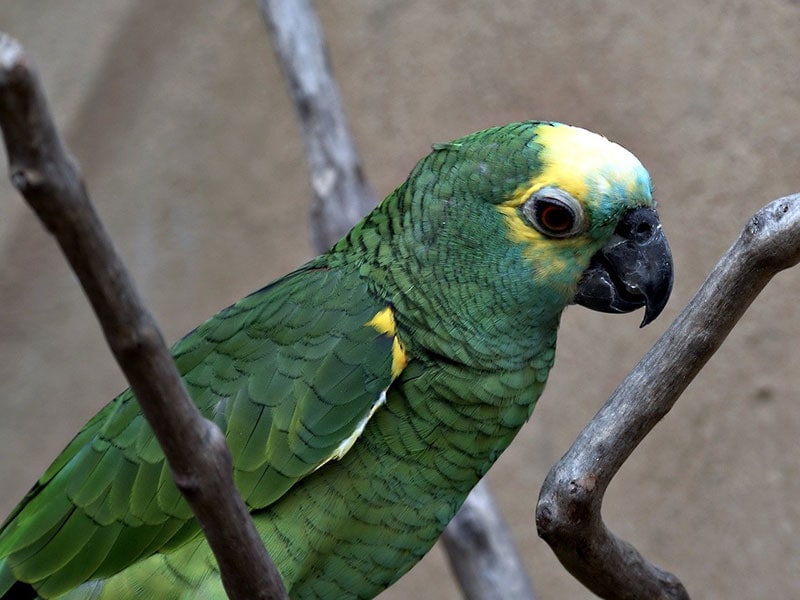
The majority of Amazon parrots have a green body with a distinctive forehead marking that ranges in colors from yellow, blue, red, purple, and lilac. Some species have different colors on their tail feathers, shoulders, and beaks. However, this is not commonly seen. They have a short tail and wide wingspan, with a sharp, curved beak.
Caring for the Amazon Parrot
Grooming
The Amazon parrot loves to bathe in freshwater. They may do this regularly and sometimes even daily. You can also spray them down with water on a warm day to encourage them to preen. If your Amazon parrot is kept with its species, they will preen each other to show affection. They need little help from their owners when it comes to grooming, but you have the option of getting their nails and wings trimmed by an avian veterinarian.
Activity
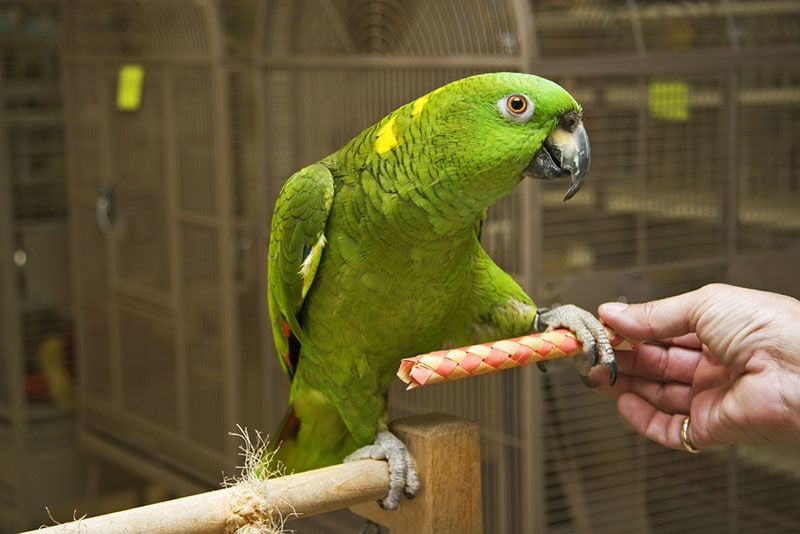
These parrots are active and intelligent. They require various interactive activities for mental stimulation. These intelligent birds do not enjoy spending time locked away in their cages and will willingly sit on your shoulder while you walk around the house, or perch in the lounge with you while you watch television.
Cage size
A good cage size for the Amazon parrot has a minimum size of 35 × 25 × 40 inches. This provides them with space to stretch their wings and explore different areas in the cage. The cage size should be doubled if you plan to keep them in pairs. The larger the cage, the better it is for your parrot.
Companionship
Amazon parrots can live together with little problems. They prefer to live with the opposite gender, but it is possible to keep the same gender siblings together without fighting.
Common Health Problems
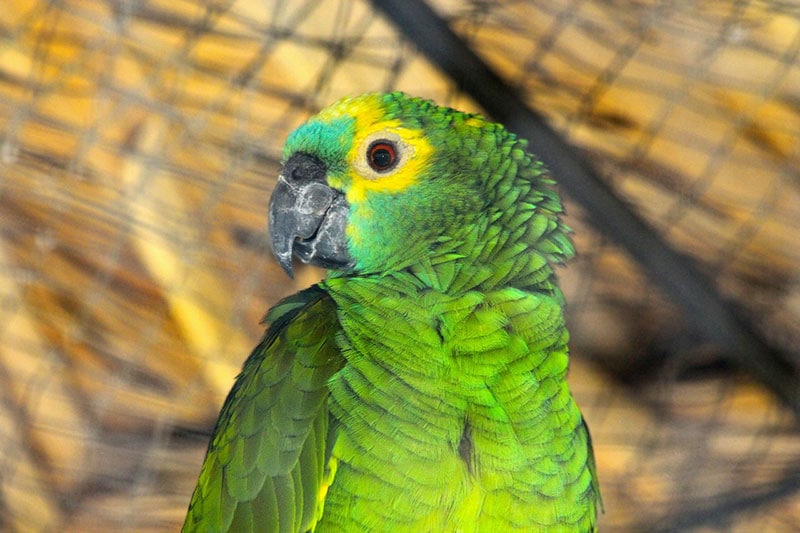
When cared for properly, Amazon parrots are fairly healthy and can live out their long lifespan with minimal health problems. A well-bred Amazon parrot should have very few genetic health complications. If their diet is good and they are kept in a large, clean cage with enrichment, your Amazon parrot should not experience severe health conditions.
Some of the most common health problems in Amazon parrots are:
Diet and Nutrition
In the wild, Amazon parrots eat various fruits, seeds, and nuts. Their beaks are designed to effectively break through nuts and fruits. A complete seed-based diet should be avoided in Amazon parrots because it does not provide them with all the necessary nutritional requirements to keep them healthy. It also promotes an imbalanced diet and can cause them to become picky about eating other foods. Pelleted diets are better suited to these parrots and can be fed as a long-term diet. Dark leafy greens and fruit are an important part of their diet and form part of 25% of their diet.
Exercise
Enrichment and mental stimulation are essential to the well-being of your Amazon parrot. Toys and perches should be plentiful in their cage, but not to the point of overcrowding. Amazon parrots enjoy chewing on toys and climbing around the cage. Even the most extravagant cage does not guarantee your parrot will be content, and time out of the cage in a bird-proof area forms part of their weekly exercise routine.
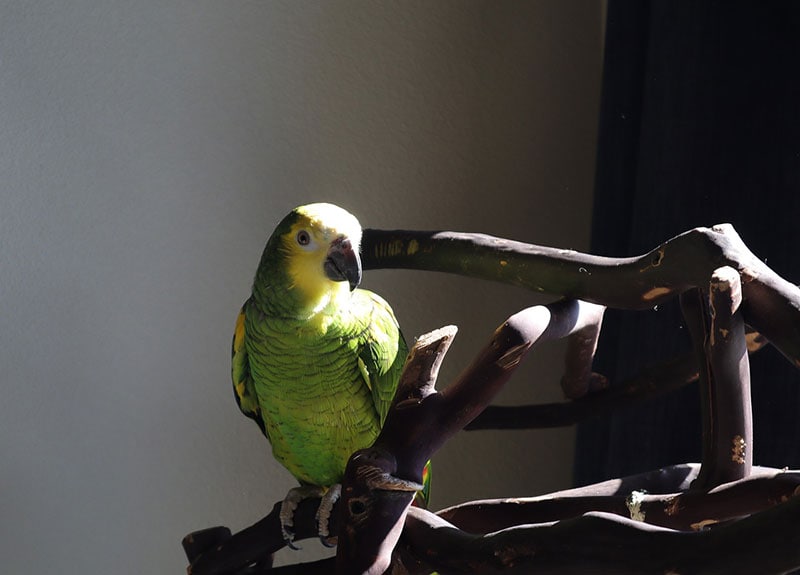
Where to Adopt or Buy an Amazon Parrot
Before purchasing an Amazon parrot from a breeder or pet store, consider checking if your local avian rescue center has an Amazon parrot up for adoption. In some cases, you may be able to foster the parrot to determine if they are right for you and your household. Otherwise, a breeder is your next best place to purchase a healthy Amazon parrot. Ensure that the breeder is experienced in the genetics and ethics of breeding quality Amazon parrots to avoid supporting backyard parrot breeders. Amazon parrots generally sell for $300 to $1,000 depending on the age, color, and size of the bird.
Final Thoughts
The Amazon parrot truly is a magnificent bird with lots to offer parrot lovers. You not only get to keep a colorful and attractive species of parrot but one that loves human interaction and exploring their environment.
We hope that this article has helped you discover new things about the Amazon parrot, and how you can properly care for them.
Featured Image Credit: fiz_zero, Shutterstock



